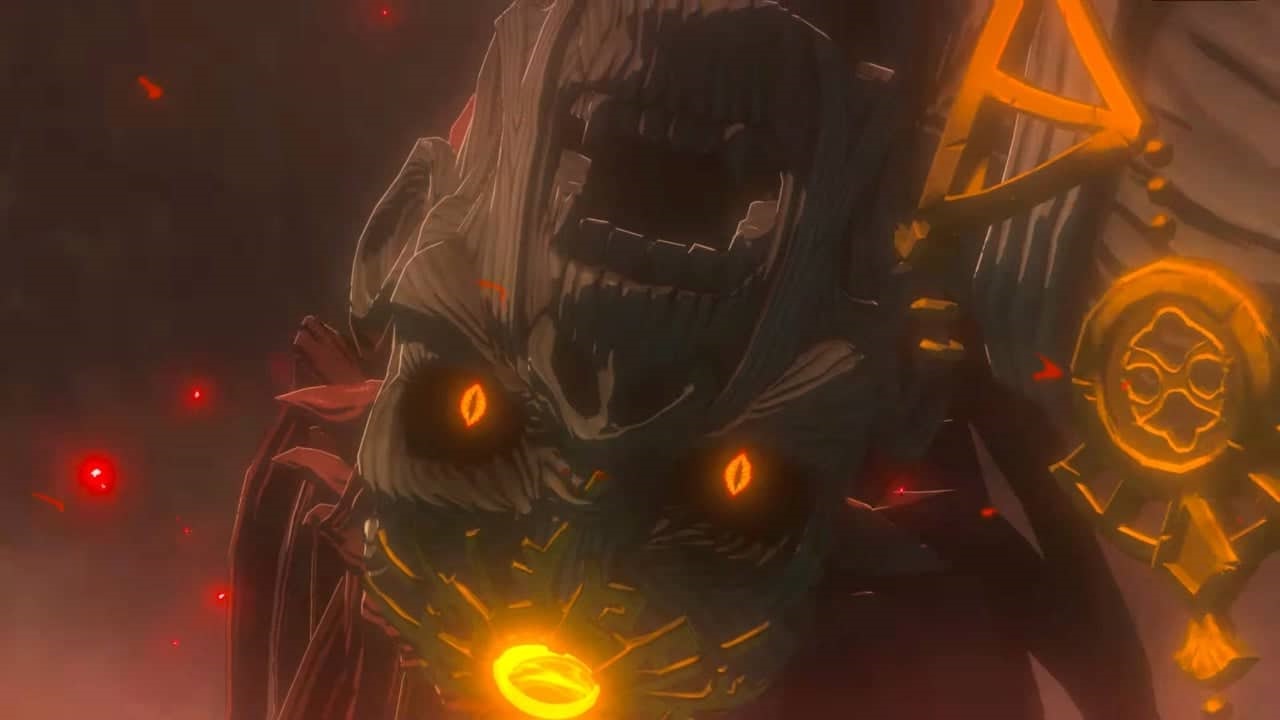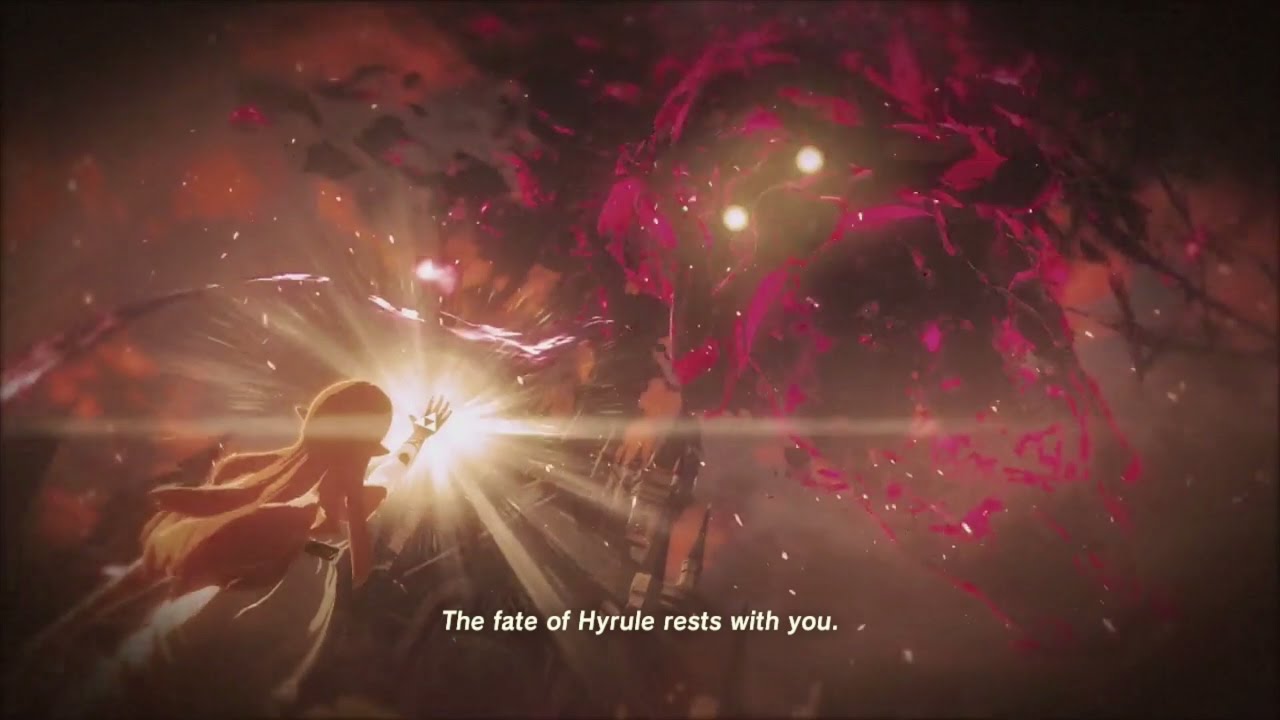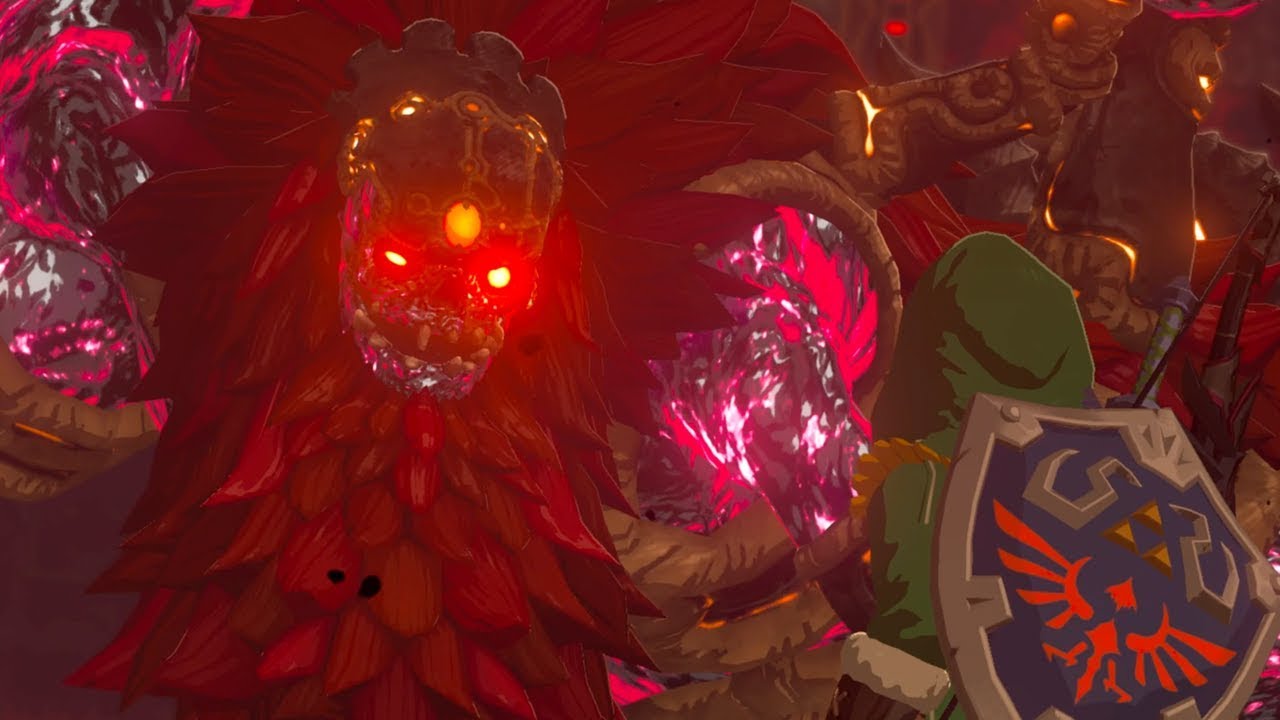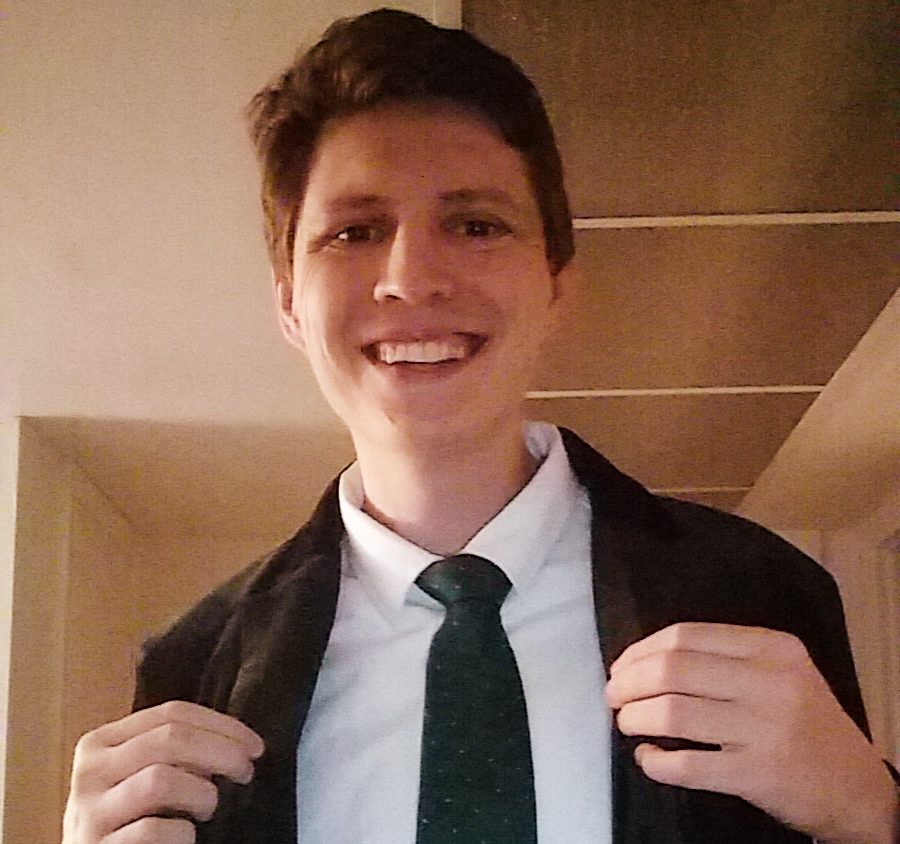Breath of the Wild’s Sequel Could Potentially Rectify The Failure of Calamity Ganon
Posted on June 29 2019 by Sean Gadus

For years to come, Breath of the Wild will be hailed as a revolutionary video game. Nintendo’s masterpiece will influence how millions of fans, critics, and developers think about action adventure games. As a Zelda acolyte, I’ve spent over 250 hours in Breath of the Wild‘s immense and stunning playground. It’s a game with incredible opportunities for exploration and experimentation. However, despite the game’s incredible gameplay, the story and key bosses fell short of what many Zelda fans might have expected. These deficiencies relate directly to the game’s lackluster depiction of Ganon, its primary antogonist. Breath of the Wild is missing a suitable antagonist, an enemy to give the story a sense of urgency and add danger to Link’s quest. While the game’s backstory is suitably tragic and emotional, these powerful ideas and feelings are lost with such a bland villain. The game’s depiction of Ganon is woefully ill suited for Breath of the Wild‘s vast ambitions.
With the announcement of Breath of Wild‘s sequel, Nintendo has the chance to rectify one of Breath the Wild‘s most disappointing elements and return Ganon to his status as one of the best villains in video games. Watching the trailer for Breath of the Wild‘s sequel, there are hints that exciting things are in store for Link, Zelda, and hopefully Ganon (though Ganon’s involvement so far is conjecture/theory). While many fans and critics have discussed moving beyond Ganon in search of a new antagonist, the character occupies a key place in the lore of the franchise. Ganon is a perfect foil for Link and Zelda, and if implemented correctly, the character can once again capture the player’s attention and praise. With this in mind, Nintendo needs to fix several key issues with Breath of the Wild‘s depiction in order to bring the Great King of Evil back in a major way.
An Integral Part of the Zelda Lore

Since his humble beginnings in the original Zelda, Ganon has been a quintessential part of Link’s journey. Ganon represents the dragon, or the supreme ordeal, a force that must be overcome before Link can truly become a hero. While the character started out quite similar to other 8-Bit bosses like Bowser, the character grew more complex with its subsequent appearance. While other video game villains have remained stagnant in their depictions, each new depiction of Ganon (or his human counterpart Ganondorf) has added a litany of atrocities to his resume, reinforcing his reputation as an all-time great villain. Each version of Ganon is different, making it fun to discuss and debate the different versions. Regardless of your favorite, the character has remained one of the most consistently enjoyable villains to take down.
In addition to Ganon’s nefarious actions and intimidating character design, Ganon also represents a fundamental part of the Zelda lore. In the stories of The Legend of Zelda, Link, Zelda, and Ganon each represent one part of the Triforce, a supreme power given to mortals by the Goddesses. While Link represents courage and Zelda represents wisdom, Ganon represents the concept of power. The lore of the series places Ganon as a fundamental part of the Zelda universe. This is not to say that Nintendo could not create a new character to claim the Triforce of Power, but Nintendo has spent nearly thirty years making Ganon a fundamental part of the most iconic trio in video game history. Removing Ganon would require a great deal of thought and care, with no guarantees that the new antagonist would mesh well with the heroes of the series. Additionally, because of his history of new designs and character traits, it is easy for Nintendo to redesign the character as they see fit.
In Zelda‘s lore, Ganon represents power. By itself, power is not evil. Power is a necessary part of life, whether it relates to government or personal relationships. However, the danger occurs when a person becomes consumed by the desire for power. This hunger for power can contaminate or fundamentally transform a person in terrible or tragic ways. Ganon represents an all-consuming desire to obtain power. Whether it is physical, magical, or spiritual, Ganon hungers to gain power and to control the world around him. Ganon an incredibly selfish character, willing to sacrifice and slaughter others to obtain power. In his role as the villain of the Zelda series, the Great King of Evil has taken the power that exists in society, nature, and religion and twisted it to his own ends.
This selfishness and lust for power make Ganon the perfect foil for Link and Zelda. While Link is often portrayed as a selfless character, giving up his own comfort and safety for others, Ganon’s thoughts flow inward toward himself. Characters like Zant serve Ganon to the bitter end, but they are discarded when they lose value to the evil king. Ganon can also be compared to Zelda, as both occupy the role of leader/ruler. Ganondorf is a ruler who works only for his own benefit, while Zelda has suffered and sacrificed to protect the people under her command. The contrast between Ganon and the other wielders of the Trifoce are a fundamental part of the Legend of Zelda series and contribute to the tension between the heroes and the villain.
The Flaws of Calamity Ganon

Calamity Ganon is the primary antagonist of Breath of the Wild, a figure who has haunted Link and Zelda for more than one hundred years. The character brought ruin to Hyrule and is responsible for the death of all five champions (including Link). With this backstory, Zelda‘s writers and developers have set the stage for a powerful confrontation. But as the game progresses, flaws in the execution of Ganon’s design and role in the story reduce his effectiveness as a villain.
The player first witnesses Calamity Ganon as the creature circles the spires of Hyrule Castle in the opening hours of Breath of the Wild. Witnessing this creature’s appearance, my mind was filled with possibilities about how I would have to battle this immense foe. I imagined the massive monster destroying entire sections of Hyrule as it chased me from corridor to corridor. I imagined Ganon filling the sky like a toxic cloud and hurtling powerful blasts of energy towards Link. I imagined Calamity Ganon summoning dozens of guardians that I would have to fight before I could finally slay the colossal demon. The possibilities were endless, though the final boss battles and designs were not as impressive as what many players initially imagined.
In Breath of the Wild, Ganon and the Blight fights that proceed it feel somewhat ordinary compared to many of The Legend of Zelda‘s previous boss fights. Calamity Ganon has an excellent visual design with a monstrous spider-like appearance, ragged red hair that hint at Ganon’s former humanity, and a monstrous face. At first glance, the character is as intimidating as any previous iteration of Ganon. Despite this, the boss fight that follows is not as exciting as final fights in other Zelda games. Because the fight is an amalgamation of previous Blight fights, it can be feel bland and repetitive. Additionally, many players and critics ranked the Blight fights as less than impressive aspects of Breath of the Wild, which makes borrowing their design a recipe for disappointment. Repeating an intense or thrilling battle is enjoyable, repeating a bland fight is not.
In addition to the reusing of the Blight mechanics and designs, the fight is also made easier by the completion of the Divine Beasts. If the player goes through the story, defeating each Blight in their respective Divine Beast, half of Calamity Ganon’s health is destroyed in a cutscene. It frustrated many players to see their epic final battle cut in half before it had even begun. For many, the most challenging and exciting way to fight Ganon was to run straight to Hyrule Castle without beating the Divine Beasts and fight all four Blights and Calamity Ganon at Hyrule Castle. For anyone who hasn’t tried this yet, I absolutely recommend it, but the concept of making the battle easier for fans who completed the entire story is nonsensical, especially as those people often have the most hearts and the best weapons.
Despite its flaws, the Calamity Ganon battle could have still been salvaged after this first phase. Since A Link to The Past, many Ganon fights have had to two stages, with the second stage presenting a new tactic or form. But Breath of the Wild bungles this Zelda tradition, introducing the player to the slow, plodding, and dull Dark Beast Ganon, a beast that does little to damage or intimidate Link and the player. Dark Beast Ganon is an incredibly bland battle that feels more like a tutorial than an epic finale. The worst part about Dark Beast Ganon is that some of the elements of a great battle are present. The setting is suitably epic, the battle theme is one of the best compositions in the game, but the battle itself is just not well designed or implemented. Because of this, Breath of the Wild sits near the bottom of my list of final boss battles and cheapens the game’s overall story.
How Nintendo Can Rectify Their Mistake

In order to succeed, Ganon needs to be a villain that not only looks intimidating but feels intimidating. Dark Beast Ganon is a boss that fails to give the player any type of challenge. A final battle does not need to be painfully hard, but Ganon has to have attacks that feel dangerous and threatening. If Nintendo expects players to arrive at Ganon with fifteen hearts and a variety of food to heal themselves, then the company should design a boss that deals massive damage with each attack. Ganon is the supreme ordeal, the final enemy that Link must face, so the character needs to feel powerful and intimidating. Whether it’s A Link To The Past‘s epic final battle or Ocarina of Time‘s two-part showdown, Nintendo has proven they can create satisfying final boss battles.
If Breath of the Wild‘s sequel wants to have a successful depiction of Ganon, the character also needs to have personality and a voice. One choice that I found frankly baffling was Calamity Ganon’s lack of a voice in Breath of the Wild. In a game where we hear Zelda speak for the first time, the primary antagonist was left without a means to communicate its evil. This is especially surprising as Ganon’s voice has been an important aspect of the character even without true voice acting. Ganondorf was known for his booming, scornful laugh in Ocarina of Time, where the character mocked Link and Zelda’s attempt to save Hyrule. Likewise, one of The Wind Waker‘s most important moments involved Ganondorf laughing madly amid the ruins of a drowning Hyrule. The different iterations of Ganon have distinct voices, each one carves out a unique identity for the iconic antagonist. With the use of voice acting likely becoming standard for The Legend of Zelda, Nintendo needs to create a villain with a voice.
One of the last keys to fix Ganon’s previous depiction is to make the character more active within the story and world. In Breath of the Wild, Ganon and his Blights seem to wait around for Link to defeat them. This passivity makes the character look feeble and weak. In contrast, Ocarina of Time saw Ganondorf manipulate and use Link to gain ultimate power, engage Link with his proxy Phantom Ganon, destroy the Zora, and threaten the Gorons with genocide. These actions increase the player’s desire to take Ganon down. Likewise, Wind Waker‘s Ganondorf is seen throughout the story executing his schemes and foiling Link’s plans. In the game, Ganon orders the Helmaroc King to toss Link across the ocean, casts a spell of eternal night on The Great Sea, battles Link with Phantom Ganon, and even stops the Master Sword in a cut scene. These interactions help the player form a hatred and antagonism toward Ganon. These simple story and gameplay moments help progress the story and make the villain feel active and powerful.
Conclusion

Nintendo has the rare opportunity to revisit and fix their mistakes in Breath of the Wild‘s sequel. One of the most pressing complaints against the game was its depiction of Ganon. Taking this feedback into account, the developers can freshen up the character, creating something that is new and exciting for long-time players. Ganon needs to feel powerful and dangerous. The character needs to have his own voice and personality that players can learn to despise. If Nintendo can do this, they can address one of the only flaws in an immaculate game.
Sean Gadus is an Associate Editor at Zelda Dungeon. He loves playing video games, reading books, watching movies and geeking out about all things Nintendo, Star Wars, Batman, and Harry Potter. His first Zelda game was Ocarina of Time.

Sean Gadus is a Senior Editor at Zelda Dungeon. His first Zelda game was Ocarina of Time, and he loves all of the 3D Zelda games from 1998-2011. The final battle of Tears of the Kingdom is one of his favorite final battles in the entire series. He wants to help build a kinder, more compassionate world. You can check out his other written work at The-Artifice.com.



